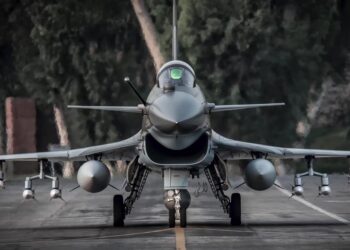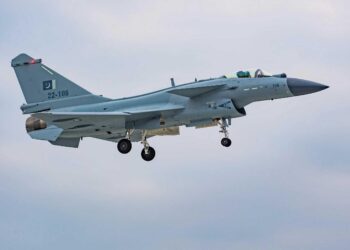University of Chicago,
Hamoukar, Syria: A huge battle destroyed one of the world's earliest cities at around 3500 B.C. and left behind, preserved in their places, artifacts from daily life in an urban settlement in upper Mesopotamia, according to a joint announcement from the University of Chicago and the Department of Antiquities in Syria.
“The whole area of our most recent excavation was a war zone,” said Clemens Reichel, Research Associate at the Oriental Institute of the University of Chicago. Reichel, the American co-director of the Syrian-American Archaeological Expedition to Hamoukar, lead a team that spent October and November at the site. Salam al-Quntar of the Syrian Department of Antiquities and Cambridge University was Syrian co-director. Hamoukar is an ancient site in extreme northeastern Syria near the Iraqi border.
The discovery provides the earliest evidence for large scale organized warfare in the Mesopotamian world, the team said.
The team found extensive destruction with collapsed walls, which had undergone heavy bombardment by sling bullets and eventually collapsed in an ensuing fire. Work during an earlier season showed the settlement was protected by a 10-foot high mud-brick wall.
The excavators retrieved more than 1,200 smaller, oval-shaped bullets (about an inch long and an inch and a half in diameter) and some 120 larger round clay balls (two and half to four inches in diameter). “This clearly was no minor skirmish. This was 'Shock and Awe' in the Fourth Millennium B.C.,” Reichel said.
Excavations at Hamoukar have played an important role in redefining scholar's understanding of the development of civilization. Earlier work had contended that cities first developed in the lower reaches of the Euphrates valley, the area often referred to as Southern Mesopotamia. Those early urban centers, part of the Uruk culture, established colonies that led to the civilization of the north, as the people sought raw materials such as wood, stone, and metals which are absent in southern Mesopotamia.
Work at Hamoukar, first undertaken by McGuire Gibson, Professor at the Oriental Institute, between 1999 and 2001 showed that some of the elements associated with civilization developed there independently of influences in the south. The latest work suggests that the two forces may have had a violent confrontation at Hamoukar.
“It is likely that the southerners played a role in the destruction of this city,” Reichel said. “Dug into the destruction debris that covered the buildings excavated this season were numerous large pits that contained vast amount of southern Uruk pottery from the south. The picture is compelling. If the Uruk people weren't the ones firing the sling bullets they certainly benefited from it. They took over this place right after its destruction.”
Ironically, for archaeological work, ancient warfare has its advantages, especially when the besieged people may have been surprised. “Whatever was in these buildings was buried in them, literally waiting to be retrieved by us.” In addition to many objects of value that are left behind, buried under massive amounts of debris, such “frozen contexts” are vital for functional analyses, helping to identify architectural units as domestic units, cooking facilities, production sites or buildings of administrative or religious use.
The mid-fourth millennium B.C. settlement at Hamoukar has many distinctively urban features. The area excavated so far contains two large building complexes built around square courtyards. Though both buildings follow closely a house plan known from other sites in Syria and Iraq, their function seems to have been non-domestic.
One of the structures contained a large kitchen with a series of large grinding stones embedded in clay benches and a baking oven large enough to fill a whole room, suggesting that food production occurred here beyond the needs of a single household. Each complex also contained a tripartite building (a unit consisting of a long central room surrounded by smaller rooms).
Objects retrieved from one of them, excavated in 2001, included stamp seals and clay sealings (lumps of clay used to close containers, usually impressed with a seal), suggesting that it was used as a storage and redistribution center for commodities.
More stamp seals and over 100 clay sealings were found in 2005, including some sealings with incised drawings instead of seal impressions indicating that similar activities occurred in the second complex. The new data lends further proof to the theory, suggested first after the 1999-2001 excavations, that a city existed at Hamoukar during mid-fourth millennium B.C.
Work this season reinforced that certain elements of technological specialization were already present at Hamoukar several hundred years earlier than the time of the settlement's destruction.
This season three trenches were excavated in the southern area of the site where previous survey work had shown the presence of countless pieces of obsidian, both blades and production debris dating to the mid-to-late fifth millennium B.C., spread over an area of 700









